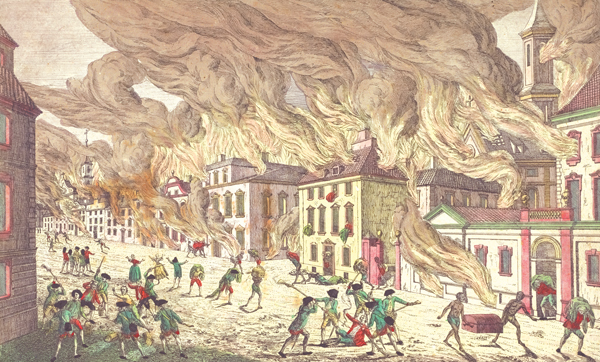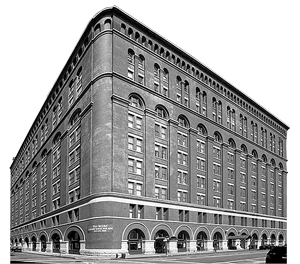Trending
This month in real estate history
Manhattan is devastated by a suspicious fire, demolition plans for a UES mansion pave way for landmarks preservation law, and more…

1776: New Yorkers set fire to southern Manhattan amid British invasion
A suspicious fire devastated what is now the Financial District 241 years ago this month. The Great Fire of New York started around midnight on Sept. 20, just five days after the British military landed in Manhattan to fight in the Revolutionary War, according to I.N. Phelps Stokes’s “The iconography of Manhattan Island, 1498-1909.” The British who fought the blaze found that fire engines were sabotaged, hoses cut and the handles of water buckets removed. The soldiers were aware that the fire was likely a case of arson, so they interrogated around 200 patriots, hanged some and confiscated their properties, according to reports. The fire destroyed between 400 and 1,000 buildings, including the original Trinity Church. In the aftermath, loyalist refugees fleeing patriot-held areas flocked to Manhattan and built a large tent village atop the ruins of the blaze, which stood until the end of the war.
1889: Merchants collide with real estate owners over new custom house

The Appraisers’ Warehouse at 666 Greenwich Street
A maelstrom of controversy erupted over the location of a new custom house, the New York Times reported 128 years ago this month. Local politicians and real estate “speculators” wanted the building to be constructed at Bowling Green to drive up land values. But merchants — who brought their goods to the custom house for inspection — wanted it near the shipping docks on the West Side, in what is now the Greenwich Village. They argued that locating it downtown would crowd Manhattan’s streets with carts and trucks hauling goods and cost them up to an estimated $150,000 ($3.8 million today) each year in transportation. After Treasury Secretary William Windom announced in early September that the new custom house would rise in Bowling Green, merchants accused him in a series of newspaper articles of acting in favor of his friends and his own local businesses. Windom eventually relented, and the United States Appraisers’ Warehouse, now the Archive apartment building, was built at 666 Greenwich Street.
1964: Plans to demolish historic mansion spur action on landmarks preservation law
Developer Anthony Campagna’s plans to demolish a Gilded Age “chateau” and two adjoining townhomes on Fifth Avenue and East 79th Street sparked outrage among preservation-minded New Yorkers, the New York Times reported 53 years ago this month. Years prior, a mayoral committee (which would later become the Landmarks Preservation Commission) had earmarked 750 buildings worthy of preservation, including the mansion, which wealthy clothing manufacturer Isaac Brokaw built in 1891. He later built four townhomes around the property for his children, and the family sold the properties by the 1940s. News of Campagna’s plans spurred protests and fast-tracked the landmarks preservation law, a draft of which was sitting on Mayor Robert Wagner Jr.’s desk. The mayor signed the bill into law in April of the following year, but by that time Brokaw’s mansion was already gone. Campagna constructed a 25-story apartment building, which still stands today, in its place.




